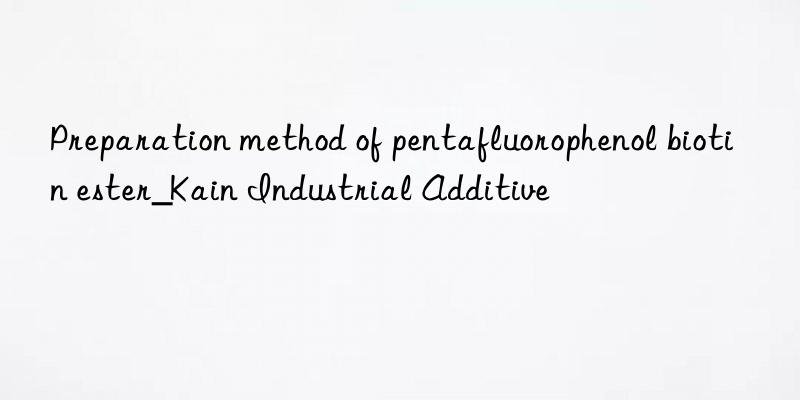
Background and overview[1]
Chemical modification of biomolecules is well known in the art. Reagents and methods for labeling, tagging, and covalent attachment of reporter molecules to biomolecules provide valuable tools in the fields of biochemistry, molecular biology, and diagnostics. Labeled biomolecules are particularly useful for detecting target components in biological samples and isolating target molecules.
Utilizes specific binding entities, including the biotin-avidin/streptavidin system. The biomolecule is preferably linked to biotin, and avidin (or streptavidin)-conjugated fluorescent dyes or enzymes are used to detect the biotin label. The specific binding affinity between biotin and avidin (or streptavidin) conjugates provides specificity for attaching fluorescent dyes, enzymes or EM labels to biomolecules, pentafluorophenol bio Biotin ester is a chemical modification product of biotin. Pentafluorophenol biotin ester is synthesized through pentafluorophenol and D-biotin, with a yield of about 98%; pentafluorophenol biotin ester is synthesized through pentafluorophenyl trifluoroacetate and D-biotin. Plain ester, the yield is about 95%.
Preparation[1]
Pentafluorophenol-biotin ester, also known as d-biotin-O-PFP, is synthesized as follows: Dissolve 1 mmold-biotin, 0.1 mmol DIEA, 0.1 mmol HOBT, and 1.2 mmol PFP in 10 ml DMF. 1.1 mmol DCC was added to the mixture. The reaction was carried out for 24 hours at room temperature with shaking. Filter out the white crystals that appear in the mixture. Add 10 ml DCM to the solution to precipitate d-biotin-O-PFP. The precipitate was washed with DCM and crystallized from methanol:ethyl acetate solution. The yield of d-biotin-O-PFP is 53%, the melting point is 172-174°C, the MW is 410gr/mol, and the O.D. 271 nm.
Main reference materials
[1] US2009203879ACTIVATEDLABELINGREAGENTSANDMETHODSFORPREPARINGANDUSINGTHESAME

 微信扫一扫打赏
微信扫一扫打赏

